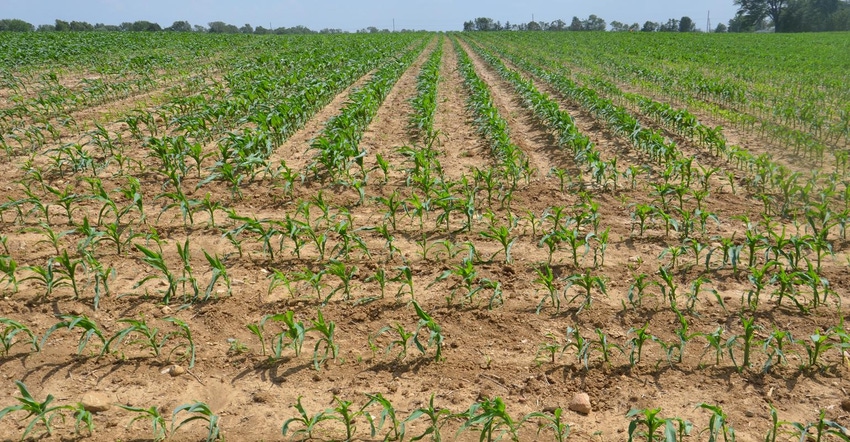
Hundreds of full-rate N trials run over the past decade in Illinois have been used to develop the N rate calculator that generates Maximum Return to Nitrogen (MRTN) N rates. While using the MRTN rate maximizes the dollar return to N, it is a lower N rate than many producers use currently.
Reluctance to lower rates following years of high yields with high N rates is understandable, given that the yield-goal-based N rates used into the early 2000s called for raising N rates as yields increased. How do we build confidence in using lower N rates when the “intensive management” approach calls for using more inputs?
Looking at the crop doesn’t provide much help: canopy color almost never tells us whether the amount of N used was less than, about equal to, or more than the crop needed in that field, that year.
Current hybrids often look the same during the season whether they were fertilized with 180 or 280 lb N per acre. So those who use high rates have no way to know that the extra N did not pay for itself. Nitrogen deficiency symptoms rarely appear in productive soils unless the soil stays wet for a period of time, in which case symptoms show up first in lower-lying parts of the field.
We have been working to initiate a program that we think will help provide confidence to lower N rates, by measuring yield at the N rate used in a field to a higher or lower rate. Where possible, we hope to use aerial imagery (drones) to monitor canopy color development and match it to yield differences. In fields where the higher N rate produces more yield, we hope to be able to use information from these comparisons to learn how to predict when that will happen, and to use more N in such fields.
The Illinois Fertilizer & Chemical Association has created a website with more information about this program and a place to sign up online. Those with questions can contact Dan Schaefer, who is coordinating this program, at [email protected]
About the Author(s)
You May Also Like




